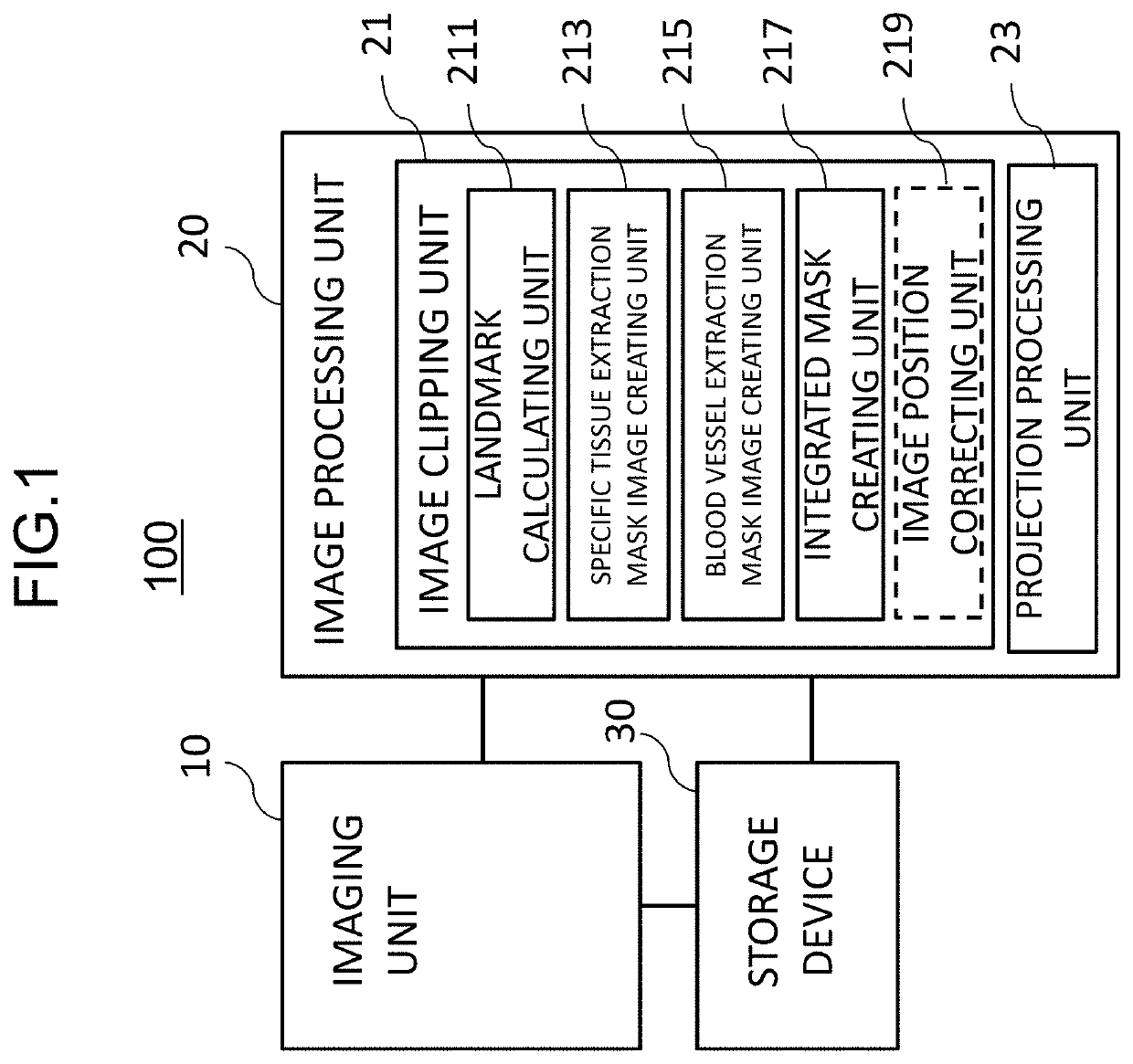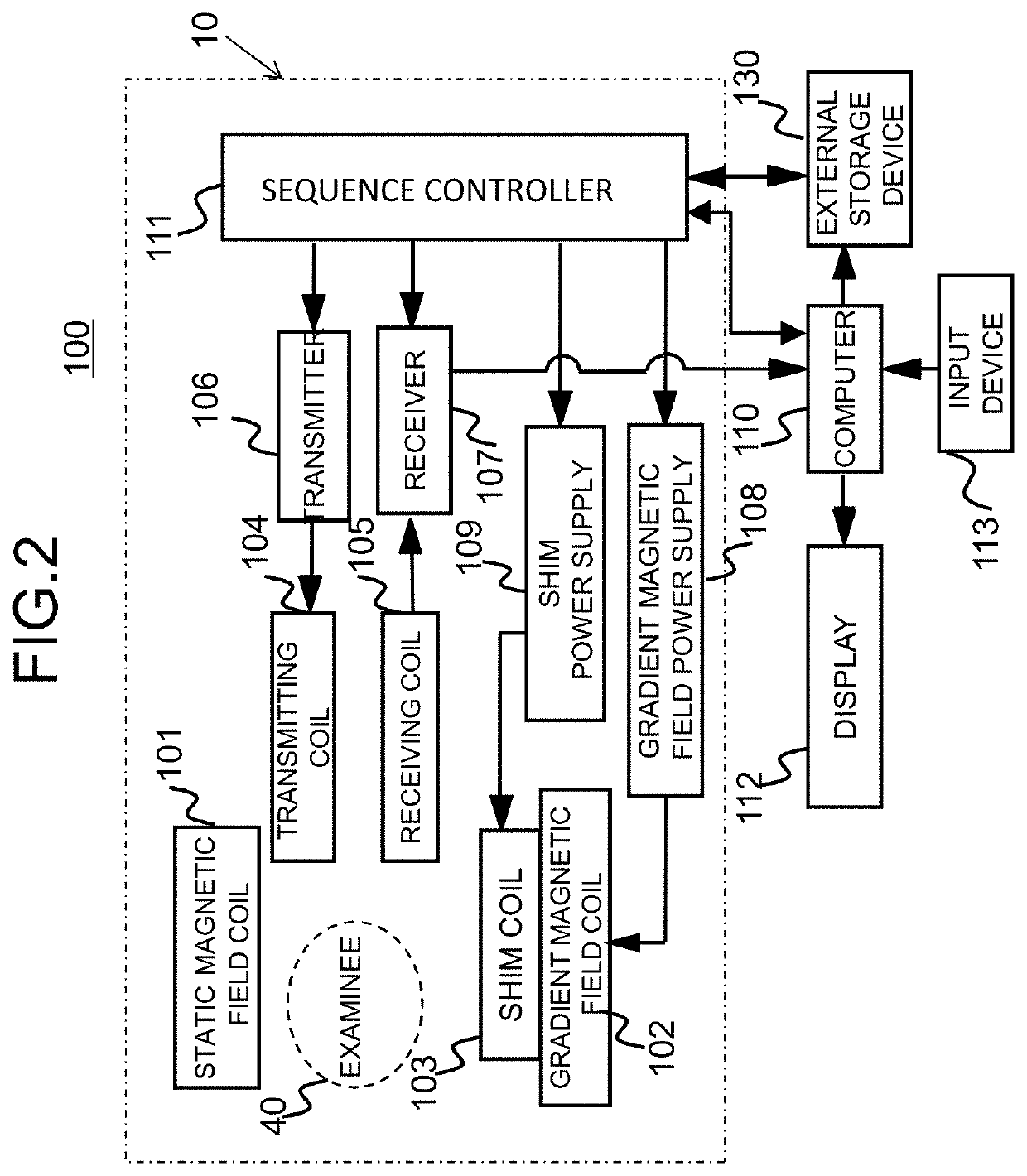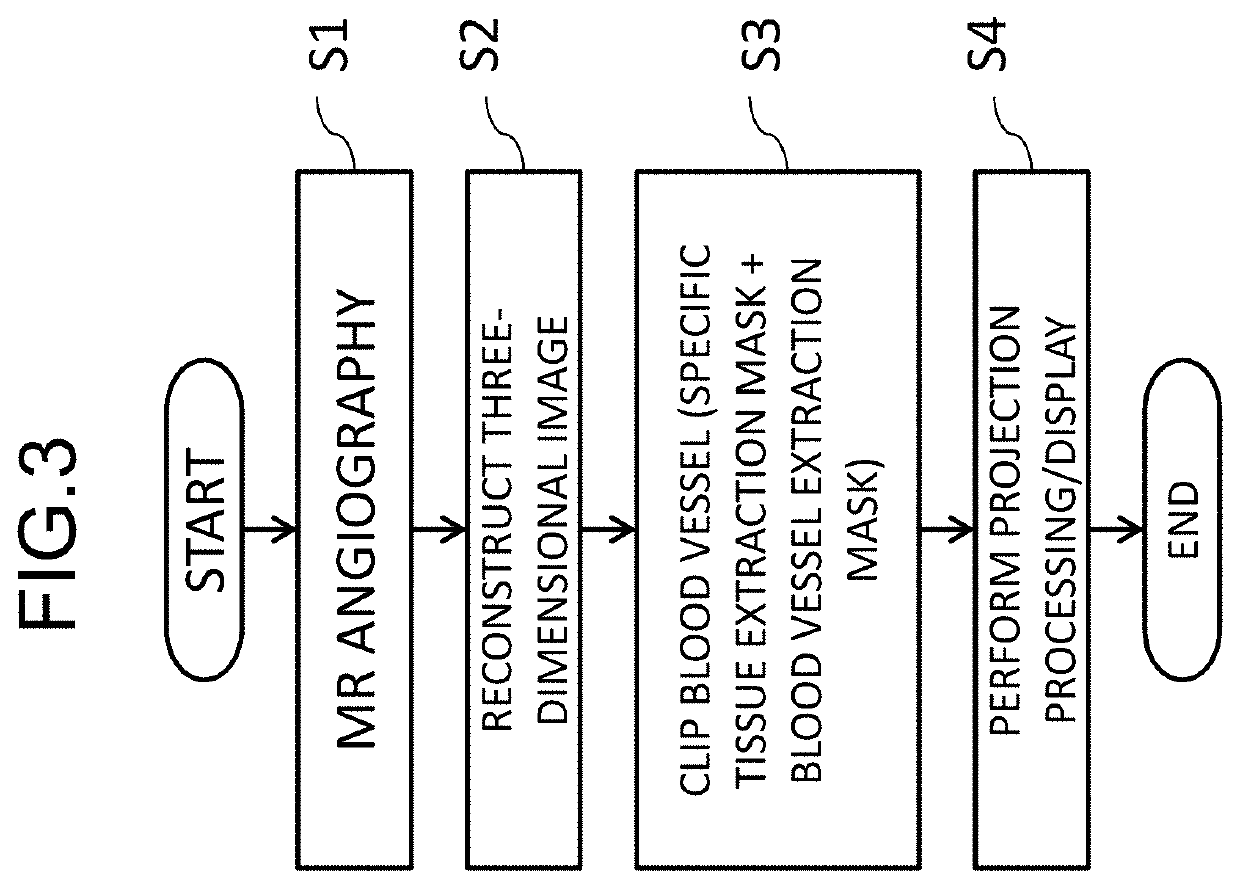Magnetic resonance imaging apparatus, image processor, and image processing method
- Summary
- Abstract
- Description
- Claims
- Application Information
AI Technical Summary
Benefits of technology
Problems solved by technology
Method used
Image
Examples
first embodiment
[0032]First, the outline of an MRI apparatus according to a first embodiment will be described with reference to FIGS. 1 and 2.
[0033]As illustrated in FIG. 1, an MRI apparatus 100 includes an imaging unit 10 that generates nuclear magnetic resonance in nuclei of atoms constituting tissues of an examinee placed in a static magnetic field, collects nuclear magnetic resonance signals generated in response thereto, and acquires an examinee image (an MR image), an image processing unit 20 that performs various operations on the MR image acquired by the imaging unit 10, and a storage device 30 that stores process results and the like of the imaging unit 10 and the image processing unit 20.
[0034]The imaging unit 10 is the same as a general MRI apparatus and includes a static magnetic field coil 101 of super-conduction, normal-conduction, or the like or a permanent magnet that generates a static magnetic field in a space (an imaging space) in which an examinee 40 is placed, a gradient magne...
modified example 1
of Brain Extraction Mask Image Calculation
[0084]In the first embodiment, an SNR image which is an image indicating homogeneity is created with attention on homogeneity of signal intensity of cerebral parenchyma, and processing such as binarization and extension is performed on the basis thereof, and a brain extraction mask image is calculated (FIG. 5: S32). In this modified example, the homogeneity of signal intensity of cerebral parenchyma is used similarly to the first embodiment, but a brain tissue is extracted using the area extension method in this modified example.
[0085]The processes in this modified example will be described below with reference back to the flow illustrated in FIG. 8 which has been referred to in the first embodiment. The process flow of the modified example in FIG. 8 is indicated by a dotted arrow.
[0086]First, a seed point is set in a three-dimensional image (S320-1). A seed point may be set to, for example, a point located a predetermined distance (a distan...
modified example 2
of Brain Extraction Mask Image Calculation
[0090]In the first embodiment and the modified example (Modified Example 1 of brain extraction mask image calculation), a brain tissue is extracted from a three-dimensional image using homogeneity of signal intensity of cerebral parenchyma. On the other hand, in this modified example, a brain is extracted by removing signals of tissues other than a brain tissue, for example, subcutaneous fat or bonemarrow of the skull, from the three-dimensional image.
[0091]The processes in this modified example will be described below with reference to the flow illustrated in FIG. 17.
[0092]First, a three-dimensional image is binarized using a threshold value and a binary image in which a value equal to or greater than the threshold value is set to 1 and a value less than the threshold value is set to 0 is calculated (S32-1). In an MRA image, signal values decrease in the order of a blood vessel (a bloodstream), subcutaneous fat, cerebral parenchyma, a skull...
PUM
 Login to View More
Login to View More Abstract
Description
Claims
Application Information
 Login to View More
Login to View More - R&D
- Intellectual Property
- Life Sciences
- Materials
- Tech Scout
- Unparalleled Data Quality
- Higher Quality Content
- 60% Fewer Hallucinations
Browse by: Latest US Patents, China's latest patents, Technical Efficacy Thesaurus, Application Domain, Technology Topic, Popular Technical Reports.
© 2025 PatSnap. All rights reserved.Legal|Privacy policy|Modern Slavery Act Transparency Statement|Sitemap|About US| Contact US: help@patsnap.com



